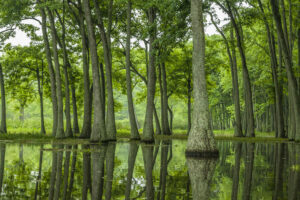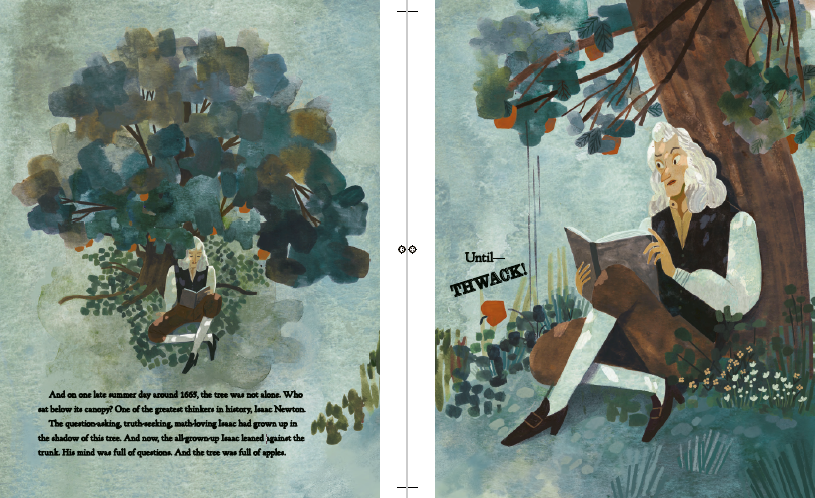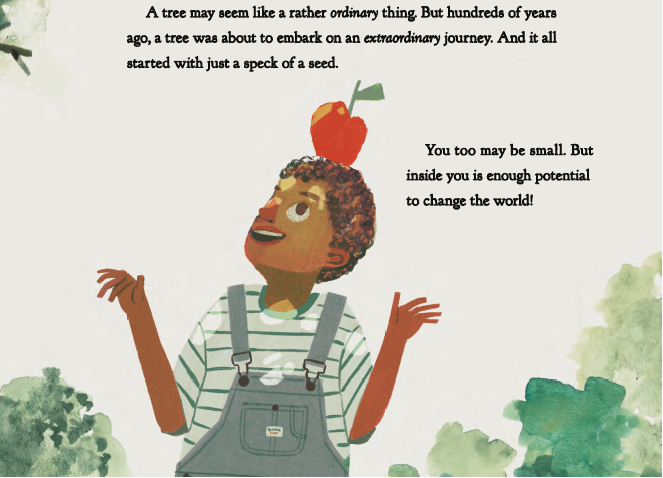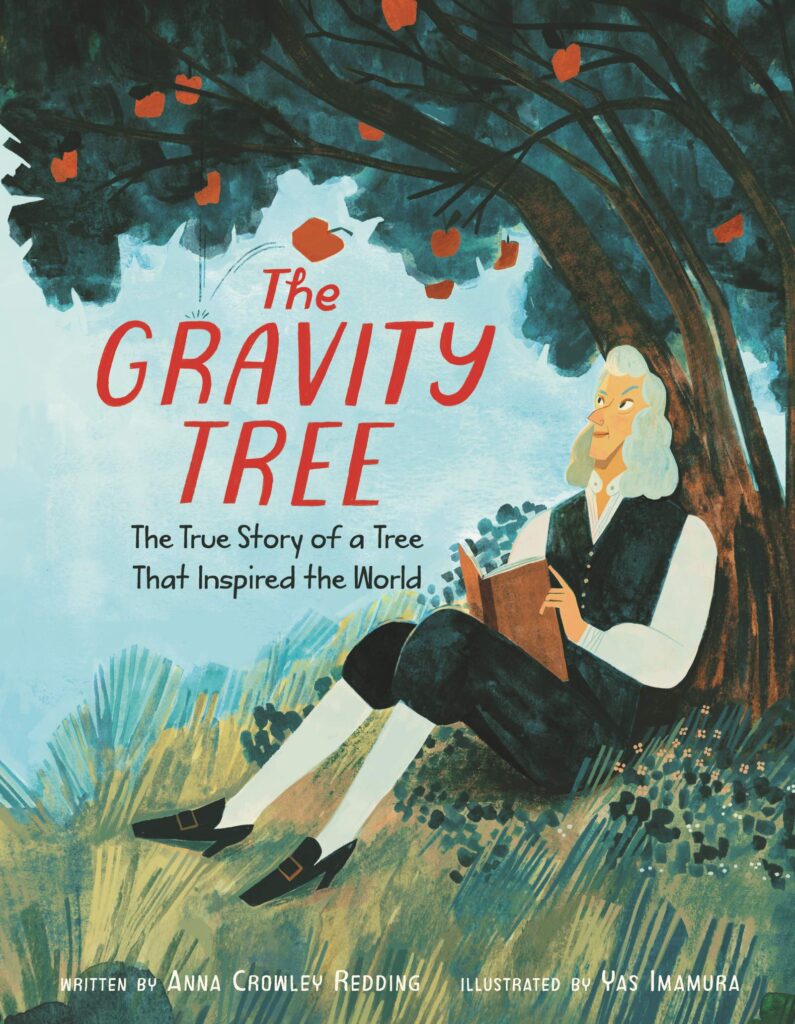If you think you’ve seen a plethora of picture books featuring trees lately, you would not be wrong. Both fiction and nonfiction tree books have been sprouting up everywhere. This makes me super happy because I love trees. I even named my dog Tupelo. He gravitates toward water — especially brackish water — so maybe he’s more accurately a swamp tupelo. ?

But about those tree books. I was particularly intrigued by one in particular: THE GRAVITY TREE: THE TRUE STORY OF A TREE THAT INSPIRED THE WORLD, written by Anna Crowley Redding and illustrated by Yas Imamura. It sounded like a PB biography of a tree, which led me to wonder: how does one write a compelling biography about a life form that is: a) not human, b) stationary, c) silent, and d) not sentient? It’s not like Redding could interview the Gravity Tree and get its opinion on things.
But what Redding did do is genius. She found three extraordinary scientists who had interacted with the Gravity Tree: Isaac Newton, who made the tree famous; Albert Einstein; and Stephen Hawking. These great thinkers provided the human element through which readers could see, understand, and sympathize with the tree. Their wonderings about the tree (and the apple) substitute for the tree’s own thoughts and feelings. The text also cleverly implies that the tree has thoughts and feelings without anthropomorphizing it, which would make the book stray from being nonfiction. Take these lines, for example, “Nestled down in the dirt, the still seed slept…,” or “…The tree was not alone. Who sat below its canopy?” and “The tree’s work was not done.”

Although rooted to the earth, the Gravity Tree could move. It took the first step, if you will, by dropping one of its apples next to Newton as he rested against its trunk. The tree faced obstacles, too, such as the storm that cracked its trunk and felled it. Everybody thought the tree was dead. There was drama here. There was, for the tree, the “long dark night of the soul.” Just like a human main character, the Gravity Tree suffered. And then, rebirth.

Pieces of the Gravity Tree’s fallen trunk went on journeys, as a decoration on the queen of England’s carriage and into space aboard the International Space Station. Its seeds and branches were used to propagate new Gravity Trees all over the world. For an immobile organism, the tree sure got around.
The illustrations also made the Gravity Tree feel like an active participant in how it inspired generations of thinkers, particularly this one, where Einstein and other scientists are staring up at the tree. For a moment, the reader becomes the tree and experiences the heady rush of being famous, of being an inspiration to so many.

From there, it is a natural segue to a second person POV at the end of the book, which draws a comparison between the reader and the Gravity Tree and invites the reader to live up to their potential, just like the seed that became the tree. The use of narrative voice, active verbs, dramatic elements, and artistic perspectives all combine to make THE GRAVITY TREE an engaging, informative, and inspiring read. Back matter includes brief bios of the tree, Newton, Einstein, and Hawking, as well as a timeline of Isaac Newton and a bibliography.

You can find out more about Anna Crowley Redding and her books on her website, and more about artist Yas Imamura here.


Wow, this book sounds fantastic! I cannot wait to read it. Thanks for the post!
Thanks for sharing Andrea. I love trees too! Great Information.
This looks amazing! I love Newton’s tree too 🙂 Thank you for shining a spotlight on it.
VERY COOL!!!
Trees are so much more than just trees – congrats on a great book!
This book sounds inspiring! Not only is it educational, but it also has heart. Thank you for sharing.
Oh, that’s cool! Sounds like a great book to read! Thanks.
Love those trees! Fascinating post, Andrea!
I didn’t realize the tree that played such a big part in Isaac Newton’s theories and discoveries also impacted others as well. Thanks for sharing this interesting book!
I have been meaning to read Anna’s book–still way behind with my reading, but requesting it right now! Thanks, Andrea!
I have been meaning to read Anna’s book–thank for the lovely review & reminder, Andrea–requesting it right now!
What a wonderful idea for a book. Well done!
Such a lovely book!
Andrea, Your post is as well-planned, informative,
and as clever as Anna’s book appears. What a clever way to write about a tree! I look forward to owning a copy.
I was fascinated by the story of the tree. What great way to teach without teaching or giving emotional characteristics without saying it. Great work.
Wonderful review, Andrea, for what sounds like an amazing book and one that children will adore!
Oooh. Perfect book for my son’s classroom. Thank you for sharing, Andrea!